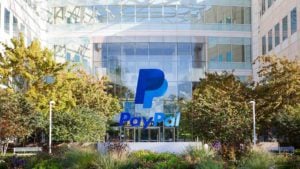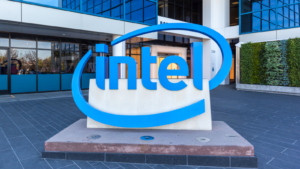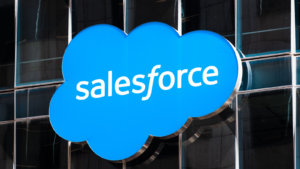In November 2022, InvestorPlace’s Luke Lango thanked the year for offering such bullish opportunities. The tech-heavy Nasdaq Composite had lost almost 30% of its value that year, and valuations had become irresistible. His two top picks – SoFi Technologies (NASDAQ:SOFI) and Opendoor Technologies (NASDAQ:OPEN) – would surge as much as 150% and 350% by July.
It turns out that the 2022 bear market was an incredible moment to buy hypergrowth companies.
Today, the situation is markedly different. The Nasdaq index of tech stocks has risen 30% this year, and the fastest-growing of them are no longer at rock-bottom valuations. It’s hard to imagine companies like Opendoor surging another 350% in 2024.
Slower-growing blue-chip stocks are also surprisingly unattractive. Why buy a dividend aristocrat like Exxon Mobil (NYSE:XOM) when 5-year bonds now yield almost twice as much? The S&P 500 Dividend Aristocrats index has fallen 3% this year.
That leaves one corner of the market with enormous potential going into 2024:
Unloved “millionaire-maker” stocks that 2023’s markets have so far left behind.
These companies are an unusual mix of wide economic moats and medium-speed growth. On the one hand, these firms usually generate consistent profits, making them relatively “boring” and easy to overlook during bull markets. You won’t find many of these firms gracing the covers of Inc. magazine or trading at 100 times earnings.
On the other hand, their high profits allow for greater financial reinvestment, which generates strong internal growth rates and share prices that slowly grind higher over time. That makes these companies millionaire-makers. (As you can see, even the explanation for their growth is boring.)
One of the best examples of these millionaire-makers is Home Depot (NYSE:HD), an often-overlooked company that’s grown 99,600% since 1983. The firm managed this incredible feat by plowing profits from existing stores into building new ones, and so on.
This week, our writers at InvestorPlace.com – our free news site – consider five more of these unloved millionaire-maker stocks to buy for 2024. All these firms have wide “moats” surrounding their business. And our writers believe that share prices will eventually catch up to these high-quality, overlooked firms.
5 Unloved Millionaire-Maker Stocks to Buy: SentinelOne (S)

Shares of cybersecurity firm SentinelOne (NYSE:S) traded as high as $76 during the 2021 “everything” bubble. Investors were piling into promising tech companies, and SentinelOne’s Silicon Valley pedigree made it look like the next breakout.
Markets weren’t wrong. SentinelOne is one of the leaders in endpoint security solutions and has effectively competed against Microsoft (NASDAQ:MSFT) and Cisco (NASDAQ:CSCO) for market share. Analysts expect sales to rise 30% annually through 2026 as the number of connected devices balloons.
But SentinelOne is not a hypergrowth firm in the traditional sense. The cybersecurity firm sells to enterprise clients, which means its growth is limited by the size and efficiency of its corporate sales team. Analysts have revised their growth rates down by as much as 25% since 2022.
Nevertheless, the enormous 80% selloff in SentinelOne’s share price since then has put it firmly on Yiannis Zourmpanos’ radar at InvestorPlace.com:
SentinelOne pioneered the world’s first purpose-built AI-powered cybersecurity platform, providing autonomous defense for enterprises…
The company’s quarterly growth with MSSP partners is remarkable, with notable YoY increases in business volume. Overall, its fundamentals offer potential for significant expansion and growth, making this an ideal option in stocks to buy.
SentinelOne is also a potential takeover target at current valuations. Its $4.4 billion enterprise value makes it easily digestible by larger cybersecurity firms as a bolt-on acquisition. And the size of existing players means that regulators are unlikely to block a takeover bid from a company like Fortinet (NASDAQ:FTNT) or Palo Alto Networks (NASDAQ:PANW) (though some divestment could be required).
2. PayPal (PYPL)

In 2021, online payments firm PayPal (NASDAQ:PYPL) was riding high. Shares had peaked above $300, and investors seemed to expect hockey stick-shaped growth. Work-from-home policies (and the online shopping habits that ensued) seemed as if they would last forever.
However, these expectations were far too bullish. Analysts have since revised their revenue projections down by a third, and PayPal’s shares now trade for $55, a stunning 82% below their all-time high. Two hundred and seventy-five billion dollars of market capitalization have evaporated into thin air.
Josh Enomoto now believes the selloff has gone too far. In an update this week, the InvestorPlace.com writer notes that PayPal remains the grease that keeps the wheels of digital commerce turning:
I’m … encouraged that PayPal has brand power. Both the new generation of tech and the old guard recognize the brand. That kind of trust may go a long way during uncertain market cycles such as this.
Also, PYPL does seem attractive based on specific metrics. For example, its enterprise-value-to-EBITDA ratio sits at 9.69X, favorably lower than the sector median of 19.59X. Even better, analysts dig it, pegging PYPL a moderate buy with an $87.07 target, implying 50% upside.
Essentially, PayPal operates a wide-moat business that grows organically by adding more active accounts and waiting for the number of payment transactions to rise over time. Less than 10% of the company’s operating expenses are spent on sales and marketing, compared to 20% at Discover Financial Services (NYSE:DFS) and 21% at Capital One Financial (NYSE:COF).
Most importantly, PayPal’s valuation now borders on the ridiculous. Shares trade at just 11.5 times forward earnings – a multiple more commonly seen among no-growth industrial firms than in wide-moat service companies. Given Josh’s history of picking out deals, investors will want to seriously consider a stake in this millionaire-maker stock.
3. Intel (INTC)

Intel (NASDAQ:INTC) made several strategic missteps in the 2010s.
- Smartphones. The chipmaker failed to diversify into mobile phone chips, leaving the industry open to chip designers like Qualcomm (NASDAQ:QCOM) and producers such as Taiwan Semiconductor Manufacturing (NYSE:TSM).
- Production. Intel clung onto its in-house production strategy, which compounded delays in launching its 10-nanometer nodes and others.
- Chip Architecture. The company stumbled in chip design, losing ground to Advanced Micro Devices’ (NASDAQ:AMD) Zen architecture and entirely missing the boat on Nvidia’s (NASDAQ:NVDA) graphical processing units (GPUs) that now power AI-related work.
However, it’s easy to forget that Intel remains the largest chipmaker by market share. The legacy firm ships two-thirds of all CPUs, and its research and development (R&D) budget remains 42% larger than AMD and Nvidia’s combined. Intel’s ability to manufacture its own chips means it captures a larger share of revenues from the chipmaking pipeline. (Intel’s rivals cede chipmaking profits to the likes of TSMC).
It’s why Yiannis Zourmpanos has become so excited about Intel’s recent uptick:
Intel has made significant strides in regaining market share in the client computing segment…
Meteor Lake boasts competitive performance, utilizing the first tile architecture for Intel and integrating Intel 4 technology. Additionally, Meteor Lake addresses AI demands, marking Intel’s foray into this space. Furthermore, Intel’s renewed focus on strategic pricing adjustments in response to inflationary costs has allowed it to maintain and increase its market share
Together with Intel’s strides in the core AI space, that tells us that share prices are likely too low. The company trades at 20X forward earnings, and cash flows from its existing CPU business means management can keep plowing money into R&D. Investors bailed out of Intel once before during the dot-com burst. They’re doing it again just as Intel is regaining its mojo.
4. Kraft Heinz (KHZ)

Josh Enomoto also notes this week at InvestorPlace.com that shares of Kraft Heinz (NASDAQ:KHC) have fallen 20% this year, creating what might be an enticing bargain:
Currently, shares trade at a forward earnings multiple of 10.86X, lower than the sector median of 15.24X. It also provides a hefty dividend yield of 4.93%. Lastly, analysts rate KHC a moderate buy with a $39.80 price target, implying almost 23% upside.
I agree with the assessment. Kraft Heinz abandoned its previous strategy of inflating profits and pumping near-term cash flow after a CEO change in 2019. In place of cost-cutting and asset sales, Kraft’s management have refocused their efforts on marketing and maintaining their existing brands.
The strategy is beginning to work. The company’s return on invested capital is expected to hit 6.9% this year, up from 6% in 2020. And analysts believe the figure will rise as high as 7.2% by 2025. That puts Kraft Heinz back on a path of earnings growth. Wall Street now expects earnings – per-share growth to hit 4.2% this year, four times higher than in 2020.
Together, that means Kraft’s valuations should rise to around 14X forward EV/EBITDA (enterprise value to earnings before interest, taxes, depreciation and amortization) – a level more typical of stable-growth consumer product firms.
5. Salesforce (CRM)

Finally, Faisal Humayun highlights Salesforce (NYSE:CRM) this week at InvestorPlace.com for its five-bagger return potential over the next five years:
The first point to note is that Salesforce has a large addressable market. By 2026, the company estimates a market size worth $290 billion. If this holds true, there is visibility for sustained growth and cash flow upside.
It’s also worth noting that Salesforce has been pursuing aggressive international expansion. As of FY 2023, the company derived 37% of its revenue from international markets. Geographic expansion is another growth catalyst.
Revenue growth has translated into operating leverage, which implies robust cash flow visibility. For Q2 2024, Salesforce reported a free cash flow of $628 million. This would imply an annualized FCF potential of $2.5 billion, likely to impact valuations positively.
Salesforce also has a best-in-class product that’s helped generate consistent growth. Sales have risen at a compound rate of 27.6% since 2010, and the company is expected to generate almost $8 billion of net income this year.
However, shares have fallen 30% since 2021 on the realization that Salesforce is becoming a medium-growth firm. The company spends 30% of its revenues on sales and marketing, which limits its growth rate once the easiest targets are acquired. And the company’s 33% market share in sales automation means future growth will become increasingly difficult to achieve.
Nevertheless, Salesforce has an enormous opportunity to keep profits growing through margin expansion and slower customer acquisition. Wall Street now expects Salesforce to grow revenues at 11% per year through 2026 and for widening margins to triple that growth rate for earnings per share.
The Millionaire Next Door
In 1996, Thomas J. Stanley and William D. Danko published The Millionaire Next Door, a study of America’s financial elite.
Through their research, they found that most American millionaires became wealthy by consistently saving money and compounding it over time. These wealthy families lived below their means and rarely bought extravagant displays of wealth.
In other words… You could be living next to a millionaire and never know it.
The two researchers also found that these wealth accumulators were willing to take some controlled risks in their investments. Many put money in the stock market, while others invested in private businesses. Either way, most of these savers were willing to invest for long periods of time.
It’s the same reason I call certain companies “millionaire-maker” stocks. These are unflashy firms that stick to what they know and generate consistent growth over time. And by buying these companies at the right prices, you too could become a millionaire next door without anyone being the wiser.
Of course, millionaire-makers aren’t the only way to make money in the markets. In fact, as we’ve been discussing here the past couple of weeks, Louis Navellier just unveiled a powerful new type of investing that “stacks” stock-picking systems.
It works by “stacking” his own Portfolio Grader system and an AI system to predict the exact share price of certain stocks, every 21 trading days. Learn more here (and claim one free year of access to the AI system).
As of this writing, Tom Yeung did not hold (either directly or indirectly) any positions in the securities mentioned in this article. The opinions expressed in this article are those of the writer, subject to the InvestorPlace.com Publishing Guidelines.
Tom Yeung is a market analyst and portfolio manager of the Omnia Portfolio, the highest-tier subscription at InvestorPlace. He is the former editor of Tom Yeung’s Profit & Protection, a free e-letter about investing to profit in good times and protecting gains during the bad.
